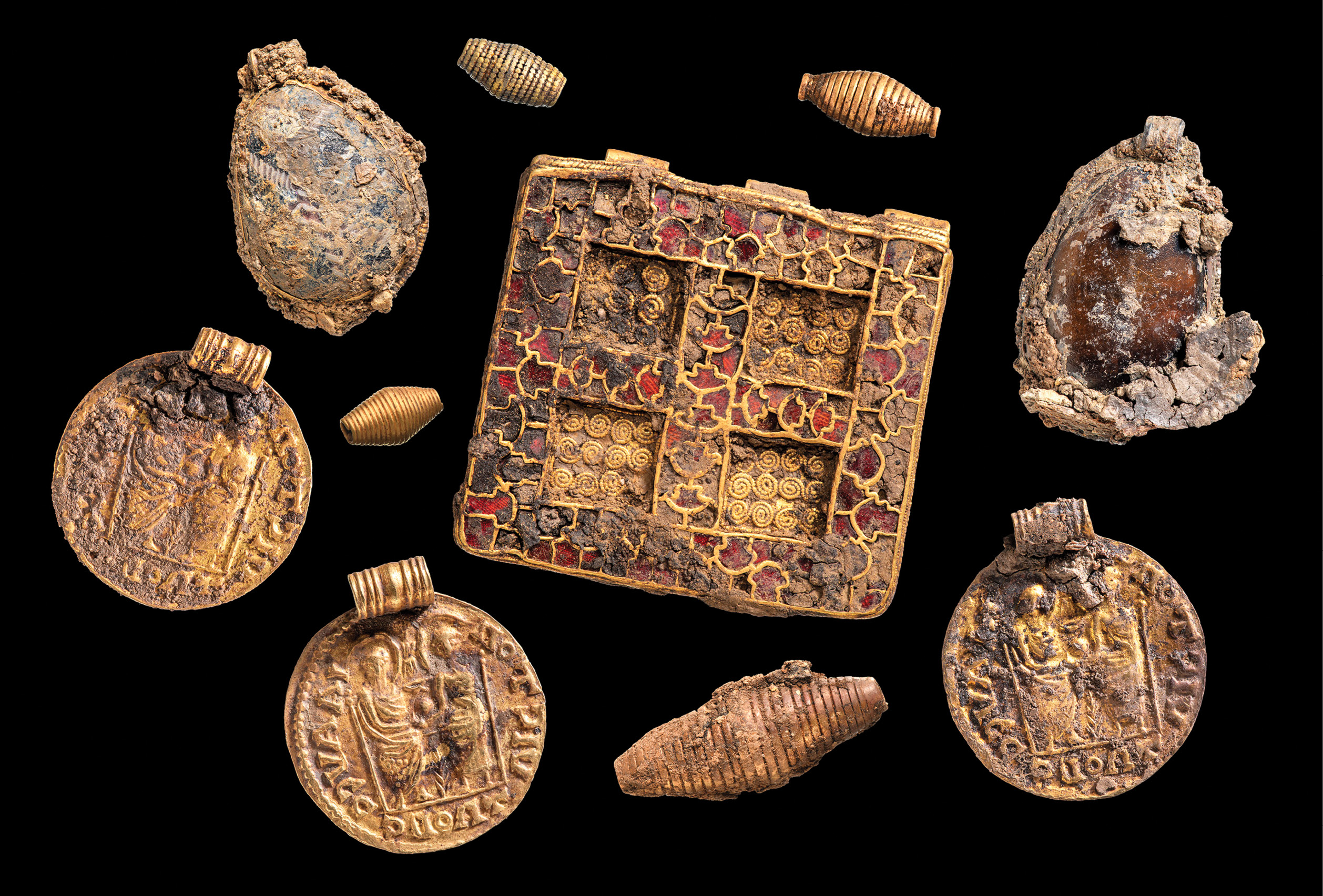Contents
An 18th Century Possibles Bag is a type of small bag used by hunters and frontiersmen. It was designed to carry essential tools and supplies during long expeditions and was commonly made of leather or fabric materials.
This bag was an indispensable item for individuals in colonial America, as it allowed them to carry items like flint and steel for starting fires, ammunition, a hunting knife, and other necessary items for survival in the wilderness. The Possibles Bag was worn on a belt or sling over the shoulder, providing easy access to its contents.
Today, these bags are sought after by collectors and historians as a glimpse into the past and a tangible connection to the rugged frontiersmen of the 18th century.
Exploring The Origins And Significance
Explore the origins and significance of the 18th century possibles bag, a historical artifact that offers valuable insights into this era’s culture and lifestyle. Delve into its construction, purpose, and role in early American society.
The Evolution Of Possibles Bags In The 18Th Century
Throughout the 18th century, possibles bags evolved alongside the changing needs and lifestyles of individuals. These bags were essentially multi-purpose pouches that pioneers and frontiersmen used to carry essential items. They were made from a variety of materials including leather, canvas, and sometimes animal hides.
Here are some key points about the evolution of possibles bags during this time period:
- The earliest possibles bags were simple and functional, designed to carry necessary items such as ammunition, flint and steel, tools, and personal belongings.
- As the century progressed, possibles bags became more decorative and reflected the artistic styles of the time. Embellishments such as intricate stitching, beadwork, and quillwork were added to showcase the owner’s craftsmanship and individuality.
- Possibles bags also evolved in terms of size and shape. While earlier bags were typically smaller and compact, later designs featured larger compartments and multiple pockets to accommodate the growing array of items needed for survival on the frontier.
Historical Importance And Usage Of Possibles Bags
Possibles bags held significant importance in the lives of those living on the frontier during the 18th century. Here are a few key points that highlight their historical importance and usage:
- Possibles bags were essential for survival in the rugged and often harsh frontier environment. They enabled pioneers and frontiersmen to carry tools, supplies, and personal belongings necessary for hunting, trapping, and general survival.
- These bags played a crucial role in the fur trade industry, as they held items such as animal traps, trade goods, and furs collected by trappers. They were also used to store precious commodities like gunpowder and lead for hunting and self-defense.
- Possibles bags were often regarded as personal and valuable possessions, serving as a symbol of self-sufficiency, resourcefulness, and independence among frontiersmen.
- Furthermore, possibles bags served as a means of self-expression and cultural identity, as individuals often decorated them with symbols and motifs that reflected their heritage and beliefs.
Connection To The Frontier Lifestyle
Possibles bags were intimately connected to the frontier lifestyle and played a vital role in the day-to-day activities of frontiersmen. Here are some key points that highlight this connection:
- The frontier lifestyle demanded a high degree of self-reliance and adaptability, and possibles bags were a tangible representation of these qualities. They enabled individuals to carry the necessary tools, supplies, and provisions for living and surviving in isolated and remote areas.
- Possibles bags were closely associated with hunting and trapping activities, which were essential for sustenance and trade on the frontier. These bags allowed frontiersmen to carry firearms, ammunition, and hunting equipment, ensuring their ability to provide food and support their livelihood.
- The frontier was characterized by its rugged and unpredictable nature, and possibles bags were designed to withstand the harsh conditions and rugged terrain. The durability and functionality of these bags made them reliable companions for frontiersmen facing the challenges of daily life in the wilderness.
The evolution, historical importance, and connection to the frontier lifestyle make the 18th-century possibles bag an intriguing artifact that sheds light on the resourcefulness and resilience of those who lived on the American frontier.
Identifying Genuine Artifacts
Discovering genuine 18th-century possibles bags can be a thrilling experience for collectors. Explore the fine craftsmanship and unique features of these artifacts, as they provide insights into the daily lives of our ancestors. Uncover the hidden stories behind these historical treasures and embrace their cultural significance.
In the fascinating world of 18th-century artifacts, the possibles bag stands out as a remarkable piece. If you’re an enthusiast or collector, being able to identify genuine artifacts is crucial. This section will guide you through the process, covering the materials used in construction, common features and design elements, and methods of authentication and verification.
Let’s dive in and uncover the secrets of genuine 18th-century possibles bags!
Materials Used In Construction:
- Leather: High-quality leather, such as cowhide or deerskin, was commonly used to construct 18th-century possibles bags. Its durability and flexibility made it an ideal choice.
- Linen or Canvas: These natural fabrics were employed for bag linings or compartments, providing an additional layer of protection for the contents.
- Metal Hardware: Buckles, D-rings, and other metal fittings were often made of brass or iron, contributing to the overall strength and functionality of the bag.
- Natural Fibers: When it comes to thread and laces, materials like hemp or linen were predominantly utilized to sew the different parts together.
Common Features And Design Elements:
- Compact Size: Genuine 18th-century possibles bags were typically small to medium-sized, designed to conveniently carry essential items for survival or daily needs.
- Multiple Compartments: These bags often featured various interior pockets and dividers, allowing for organized storage and easy access to different contents.
- Sling or Strap Closure: Many bags used a long strap allowing the bag to be worn across the body or slung over the shoulder, ensuring practicality and security.
- Embellishments: While some possibles bags were simple in design, others boasted decorative elements such as engraved metal buckles, colorful embroidery, or beadwork, depending on the cultural influences of the time and region.
Methods Of Authentication And Verification:
- Provenance: The bag’s documented history, including previous owners, exhibitions, or publication references, can add credibility to its authenticity.
- Expert Opinions: Consulting with reputable appraisers, antique dealers, or curators well-versed in 18th-century possibles bags can provide valuable insights regarding its authenticity.
- Comparative Analysis: Studying known genuine bags, historical records, or museum collections can help identify specific design features, materials, or construction techniques characteristic of the 18th century.
- Craftsmanship Assessment: Examining the quality of stitching, leatherwork, hardware, and any distinguishing characteristics can help determine if the bag aligns with the craftsmanship of the era.
Identifying genuine 18th-century possibles bags requires a combination of knowledge, research, and careful examination. Remember to consider the materials used, common features and design elements, as well as rely on provenance and expert opinions. By employing these methods of authentication and verification, you can confidently navigate the world of artifact identification.
Happy hunting!
Unveiling The Hidden Treasures
Unveiling the Hidden Treasures presents an exquisite 18th-century possibles bag, showcasing its intricate design and historical significance. Discover the charm of this captivating piece, revealing the secrets of the past.
In the 18th century, the possibles bag held a world of secrets and surprises. This small, unassuming pouch accompanied explorers, frontiersmen, and adventurers on their journeys, revealing their resourcefulness and self-sufficiency. Let’s take a peek inside the artifact and uncover its hidden treasures.
Essential Tools For Survival And Self-Reliance:
- Flint and steel: This trusty duo sparked the flame that provided warmth, cooked meals, and illuminated the darkest nights.
- Hunting knives: Sharp and reliable, these blades served as indispensable tools for hunting, preparing food, and crafting essential items.
- Compass: Navigating uncharted territories was a daunting task, but the compass provided a sense of direction and prevented explorers from losing their way.
- Whistle: In dangerous situations or emergencies, the shrill sound of a whistle carried far and wide, signaling for help or alerting others.
- Sewing kit: A simple sewing kit ensured that tears and rips in clothing or equipment could be promptly repaired, prolonging their usefulness.
Medical Supplies And Remedies Carried:
- Herbal remedies: Nature’s pharmacy packed in the form of dried herbs, roots, and leaves offered relief from ailments like fever, stomachache, or colds.
- Bandages and splints: Treacherous terrains often resulted in injuries, and a well-stocked possibles bag included bandages and splints to tend to wounds and fractures.
- Antiseptic solution: To ward off infections, explorers carried antiseptic solutions, ensuring wounds could be safely cleaned.
- Pain relievers: Medical provisions also included pain relievers like willow bark or opium tinctures, soothing the adventurers’ aching muscles and joints.
Personal Items And Keepsakes Found:
- Pocket watch: A timepiece cherished by its owner, offering a sense of familiarity and marking the passage of time in the midst of unknown landscapes.
- Letters and photographs: Tucked away in the depths of the possibles bag, these mementos connected the adventurers to their loved ones, providing solace in moments of longing or isolation.
- Pocket-sized books: In the solitude of the wilderness, these small literary companions offered intellectual stimulation and an escape into fictional realms.
- Personal amulets: Often worn around the neck or carried in the possibles bag, these symbols of luck and protection served as a comfort in uncertain times.
As the possibles bag traveled through the ages, it became a testament to the resilience and adaptability of those who carried it. Unveiling the hidden treasures within this humble artifact not only reveals the tools essential for survival and self-reliance, but also reflects the humanity and personal connections of the explorers who relied on it.
Caring For Valuable Relics
Discover how to care for your valuable 18th-century possibles bag with our expert advice. From cleaning and restoration to proper storage techniques, we’ll help you preserve this historical relic for future generations.
Possibles bags from the 18th century are valuable relics that require proper care to ensure their preservation. Whether you own one of these historical artifacts or work with them in a museum or exhibition setting, it’s essential to understand how to care for and handle them correctly.
This section will provide guidelines for proper storage, display options, and considerations when handling and transporting possibles bags.
Proper Storage To Prevent Deterioration:
- Store possibles bags in a cool, dry place to minimize the risk of mold, mildew, or insect infestation.
- Avoid exposing the bags to direct sunlight, as it can cause fading or discoloration.
- Use acid-free tissue paper or unbleached muslin to wrap the bags, providing an extra layer of protection.
- Keep the bags away from sources of moisture, such as basements or areas prone to leaks.
- Use archival-quality storage containers, such as acid-free boxes or museum-quality display cases, to protect the bags from dust and pollutants.
- Avoid storing the bags in plastic bags or covers, as they can trap moisture and promote deterioration.
Display Options For Showcasing The Bags’ Historical Value:
- Consider displaying possibles bags in a well-lit area, using spotlights or track lighting to enhance visibility while minimizing exposure to damaging UV rays.
- Use appropriate display stands or mounts that provide support without putting unnecessary pressure on the bags.
- Provide clear information labels or placards that describe the bag’s origin, historical context, and any notable features.
- Consider using transparent barriers, such as glass cases or acrylic display boxes, to shield the bags from dust and prevent direct handling.
Considerations When Handling And Transporting Possibles Bags:
- Always wash and thoroughly dry your hands before handling the bags to avoid transferring dirt, oil, or other contaminants.
- Use clean, white gloves made of cotton or nitrile when handling the bags to prevent direct contact with oils and sweat from your hands.
- Avoid applying excessive pressure or force while handling the bags to prevent tearing or damaging fragile elements.
- When transporting possibles bags, use padded bags or protective cases to offer cushioning and prevent shifting during transportation.
- Ensure that the bags are securely fastened inside the transport container to minimize the risk of movement or damage.
By following these guidelines for proper storage, display, and handling, you can ensure that your valuable possibles bags are well-preserved and can continue to be appreciated for their historical significance. Whether you’re a collector, curator, or enthusiast, caring for these relics properly is essential to their longevity and continued enjoyment.
Determining Value And Rarity
The value and rarity of an 18th-century possibles bag can be determined by considering its historical significance, craftsmanship, condition, and rarity of similar items in the market. These factors play a crucial role in determining the overall worth and desirability of the bag to collectors and enthusiasts.
18th Century Possibles Bag:
In the realm of antique collectibles, the value and rarity of an item can greatly influence its desirability among collectors. This holds true for the 18th-century possibles bag, a fascinating artifact that offers a glimpse into the past. To properly determine the value and rarity of these bags, there are several factors to consider.
Let’s explore these aspects in more detail.
Establishing Provenance And Historical Context:
- Research the bag’s origin and history to establish its provenance.
- Determine the time period and geographical region it comes from.
- Assess the bag’s connection to renowned craftsmen or historical events.
Factors To Consider When Evaluating Condition And Quality:
- Examine the overall physical condition of the bag, including any signs of wear, damage, or repairs.
- Evaluate the quality of the materials used in its construction, such as the type of leather or fabric and the craftsmanship.
- Take into account any decorative elements, such as embroidery or hand-painted designs, and their quality and condition.
Rarity And Desirability Among Collectors:
- Consider the scarcity of similar possibles bags on the market.
- Assess the demand for 18th-century possibles bags among collectors.
- Take note of any unique or distinguishing features that increase the bag’s desirability.
By thoroughly understanding the provenance and historical context of the possibles bag, evaluating its condition and quality, and assessing its rarity and desirability among collectors, one can confidently determine its value. Collectors value these bags not only for their historical significance but also for their aesthetic appeal and scarcity.
So, whether you are a collector or simply intrigued by the 18th-century possibles bag, delving into these aspects will deepen your appreciation for this remarkable artifact.

Credit: www.exodustravels.com
Impact On Modern Culture And Design
The 18th century possibles bag has had a significant impact on modern culture and design. This unique accessory from the past showcases the craftsmanship and style of that era. Today, it continues to inspire fashion trends and add a touch of nostalgia to contemporary designs.
Influence On Contemporary Fashion And Accessories
The 18th-century possibles bag has made its mark on modern culture and design. Its unique aesthetic and utilitarian features continue to inspire fashion designers, accessory makers, and even enthusiasts of reenactments and living history. Here’s how this timeless accessory influences contemporary fashion and accessories:
- Versatile design: The functional design of the possibles bag, with its multiple compartments and durable materials, has influenced modern-day bag designers. Today, you can find handbags, backpacks, and pouches that draw inspiration from the 18th-century bag’s mix of style and practicality.
- Vintage-inspired fashion: Retro and vintage fashion trends often take cues from the past, and the 18th-century possibles bag is no exception. Its rustic charm, intricate leatherwork, and antique closures have found their way into modern clothing styles, such as jackets, vests, and belts.
- Leatherwork and craftsmanship: The art of traditional leather crafting is preserved through the influence of the possibles bag. Skilled artisans continue to create high-quality leather accessories, using techniques and styles reminiscent of the 18th-century bag.
- Iconic closures: The iconic buckles, clasps, and buttons used on possibles bags have become popular in contemporary fashion design. These features add character and a touch of nostalgia to clothing and accessories like shoes, belts, and wallets.
Incorporation In Reenactments And Living History
In addition to its impact on modern fashion and accessories, the 18th-century possibles bag holds immense significance in the world of reenactments and living history. Here’s how it is incorporated into these historical recreations:
- Authenticity in reenactments: Possibles bags are an essential element for reenactors seeking to recreate historically accurate outfits. These bags serve a practical purpose, enabling participants to carry essential items like flints, ammunition, and personal belongings like food and tools.
- Visual storytelling: The presence of possibles bags in reenactments helps to visually transport spectators and participants back to the 18th century. These bags provide valuable insights into the daily lives and challenges faced by individuals living during that era.
- Reflecting historical accuracy: Reenactments strive to recreate historical events as accurately as possible. The inclusion of possibles bags adds another layer of authenticity, enhancing the overall experience for both participants and observers.
- Educational tool: The use of possibles bags in living history demonstrations can educate and engage audiences about the practical aspects of daily life in the 18th century. They offer a tangible representation of the belongings and necessities that individuals would have carried during that time.
Inspiring Modern-Day Survival Kits And Outdoor Gear
The influence of the 18th-century possibles bag extends beyond fashion and reenactments. Its functional design and practicality have inspired the creation of modern-day survival kits and outdoor gear. Here’s how this historical accessory has impacted these aspects:
- Compact and organized: The organizational features of possibles bags, such as compartments and pockets, have influenced the design of modern survival kits. These kits aim to provide individuals with essential items in a compact, easily accessible manner.
- Durable materials: Just like the 18th-century bags, modern outdoor gear and survival kits often utilize durable materials such as leather, canvas, and sturdy fabrics. These materials ensure the longevity and reliability of the equipment, even in rugged outdoor environments.
- Versatility in functionality: The possibles bag’s ability to hold a variety of items, from tools to food provisions, has inspired the design of multi-functional outdoor gear. Manufacturers now create backpacks, pouches, and utility belts that can accommodate diverse needs, supporting outdoor enthusiasts and survivalists.
- Retro appeal: The timeless charm and rugged aesthetic of the possibles bag have also found their way into modern outdoor gear designs. This vintage-inspired appeal adds a touch of style and nostalgia, enhancing the overall outdoor experience.
The 18th-century possibles bag continues to captivate the imagination of designers, historical reenactors, and outdoor enthusiasts, leaving an indelible mark on contemporary culture and design. Its influence can be seen in various fashion trends, historical recreations, and modern survival gear, making it a revered and cherished accessory in today’s world.
Where To Find And Acquire Authentic Pieces
Discover and acquire authentic 18th-century possibles bags from trusted sources that offer a wide selection of genuine pieces, ensuring their history and craftsmanship are preserved. Explore unique designs and find the perfect addition to your collection.
Antique Stores And Auctions
- Antique stores and auctions are excellent places to find and acquire authentic 18th-century possibles bags. Here’s why:
- Antique stores: These specialized stores are treasure troves for vintage and antique items. Visit local antique shops, especially those with a focus on historical items, to discover unique 18th-century possibles bags. Keep in mind that availability may vary, so it’s worth checking in regularly or contacting the store owners to inquire about upcoming acquisitions.
- Auctions: Attending auctions can be an exciting way to find authentic 18th-century possibles bags. Stay updated on local estate sales, antique auctions, or online platforms that host such events. Keep an eye out for items labeled as “period-specific” or “antique” to ensure their authenticity.
Online Marketplaces And Forums
- Online marketplaces and forums offer convenience and a wide range of options for finding and acquiring authentic 18th-century possibles bags. Consider the following opportunities:
- E-commerce platforms: Popular online marketplaces like eBay, Etsy, and Ruby Lane often feature sellers specializing in historical items. Conduct specific searches using keywords like “18th-century possibles bag” to narrow down the results. Pay attention to seller ratings, reviews, and detailed item descriptions to ensure authenticity.
- Historical reenactment forums: Engaging with historical reenactment communities and forums can prove fruitful. Members may share their knowledge of where to find authentic items or even offer possibles bags for sale. Participating in discussions and connecting with fellow enthusiasts can lead to valuable leads and insights.
Connecting With Collectors And Experts In The Field
- Connecting with collectors and experts in the field is a valuable strategy for finding and acquiring authentic 18th-century possibles bags. Consider the following approaches:
- Social media groups and pages: Joining relevant social media groups and pages dedicated to historical items can connect you with collectors and experts. Engage in discussions, seek advice, and express your interest in finding an authentic possibles bag. The community may direct you to trusted sources or individuals who can assist you.
- Historical reenactment events: Attend historical reenactment events where collectors and experts congregate. These gatherings offer the opportunity to network with individuals passionate about historical items like 18th-century possibles bags. Strike up conversations, ask for recommendations, or even inquire about possible sales or trades.
- Museums and historical societies: Reach out to local museums or historical societies specializing in the 18th century or historical artifacts. Curators and experts in these institutions may provide valuable guidance and refer you to reputable sources for authentic possibles bags.
Remember, when acquiring an authentic 18th-century possibles bag, always prioritize research, authentication, and engaging with trusted sellers or experts.
Frequently Asked Questions On 18Th Century Possibles Bag
What Was Kept In A Possibles Bag?
A possibles bag typically held essential items for survival or daily tasks while traveling.
Why Is It Called A Possibles Pouch?
A possibles pouch is called so because it holds various essential items for outdoor activities.
What Did Mountain Men Carry In Their Possibles Bag?
Mountain men carried essential items such as knives, flint and steel, traps, ammunition, cooking utensils, and food in their possibles bag.
What Is The Possible Bag History?
Possible bag history refers to the potential correlation between the historical use of a bag and its origins.
Conclusion
The 18th-century possible bag offers a fascinating glimpse into the lives and needs of our ancestors. Its purposeful design, rugged construction, and versatile functionality make it a remarkable accessory of the era. Whether used for hunting, traveling, or daily life, these bags were essential for carrying essential items.
The craftsmanship and attention to detail that went into creating these bags demonstrate the skill and resourcefulness of the individuals who lived during this time. Today, collectors and history enthusiasts alike treasure these bags for their historical significance and aesthetic appeal.
If you’re interested in experiencing a piece of history or adding a unique touch to your own style, consider adding an 18th-century possible bag to your collection. With its rich history and timeless design, it’s not just a bag, but a tangible connection to our past.










